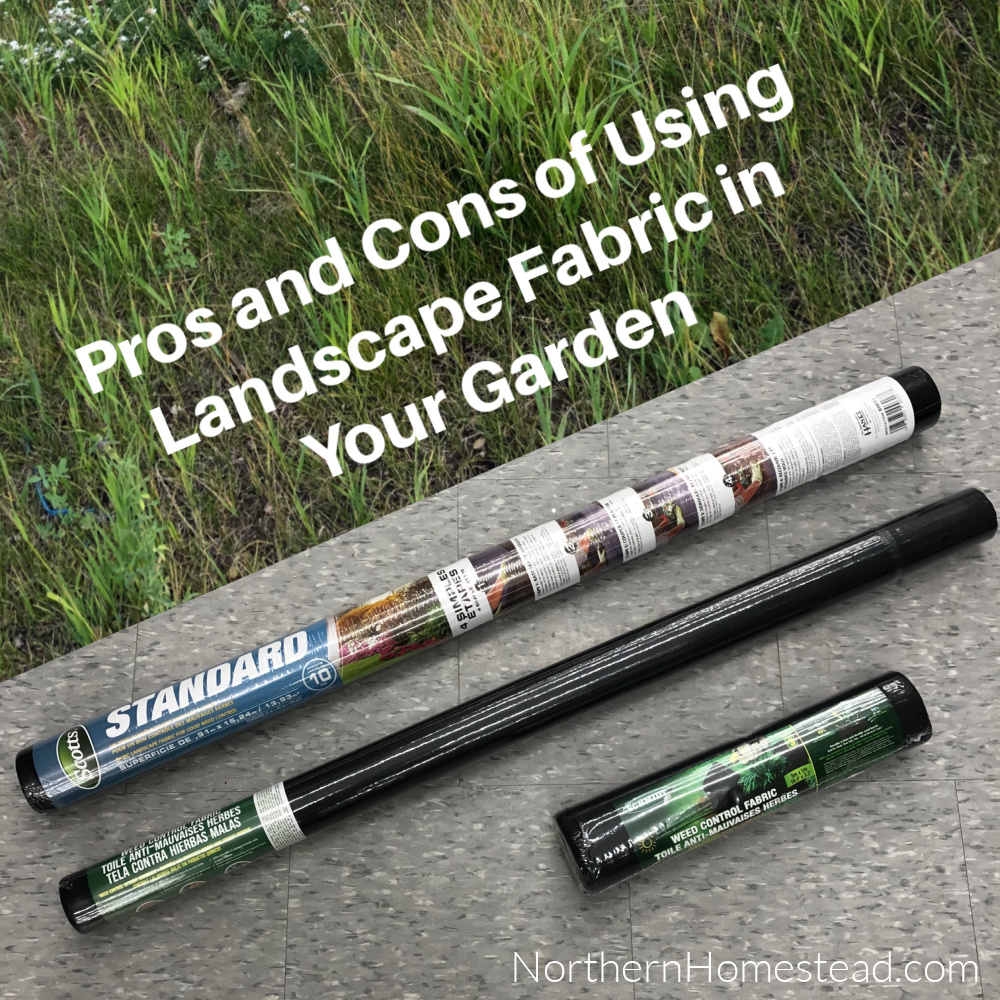
This blog post will discuss the pros and cons of using landscape fabric in your garden. It may sound appealing to roll out some weed control fabric and forget about weeding your garden while avoiding harmful chemicals for many years. Some manufacturers even offer a 25-year guarantee for their products. However, the question is whether landscape fabric works as claimed. In this article, we will provide four reasons why we do not recommend using weed control fabric as a long-term solution. We will also suggest practical uses for weed control fabric and natural alternatives.
1. Landscape fabric is unnatural
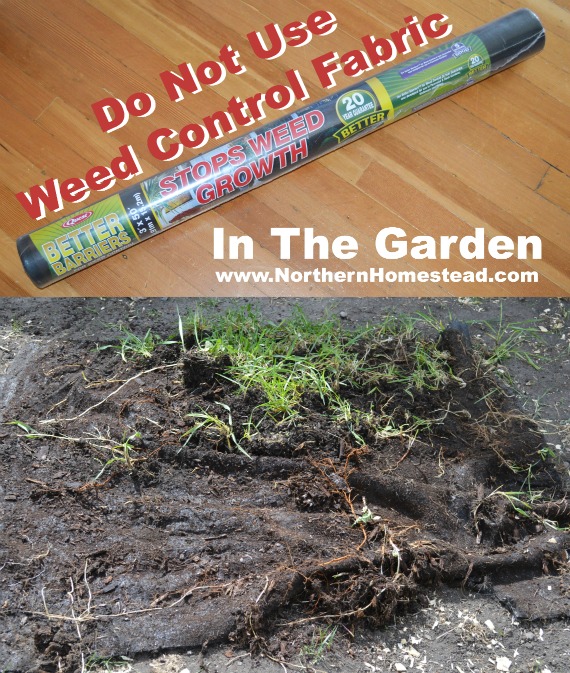
Even though it is true that weed control fabric is not a questionable toxic chemical, it still is far from being natural. Professional landscapers most commonly use a layer of mulch on top of landscape fabric. It mimics a natural landscape design and is most often used for perennial plants. However, Weed Control Fabric is not biodegradable. Once in, it stays there for many years, creating more and more problems. Over time, it will deteriorate, so removing the fabric in one piece becomes almost impossible.
When used under wood mulch, rocks, or even worse, under soil, the fabric traps earthworms and other creatures in the ground. These living beings live in the soil and benefit the soil. Whatever happened to be below the landscape fabric has to stay there, and whatever happened to be above it can not go down anymore. It’s not a healthy situation. Well, you might not care so much about those thousands of creatures living in our soil, but this is just one of the reasons not to use a weed cloth. Even though I would encourage you to care, these creatures make our soil alive and nutritious.
Best use of landscape fabric in the vegetable garden
Weed Control Fabric can be used under walking paths and decks. Places where dust and dirt will not find their way between the weed barrier and the surface, so weeds can not grow on top of the fabric.
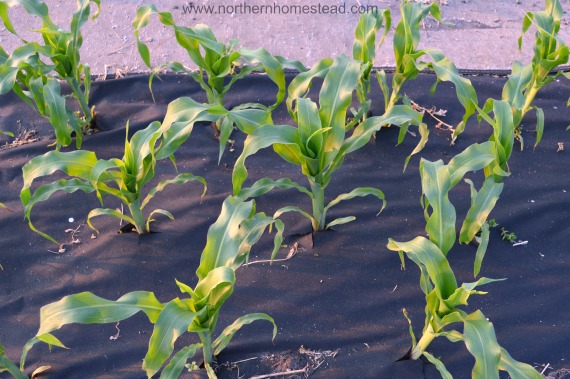
Weed control fabric can also be used as a ground cover in the vegetable garden if you do not use mulch on top of the fabric. Make small holes in the fabric with a utility knife to plant heat-loving plants like corn; it will warm the plant roots. Landscape fabric can also be used in the same way to keep strawberries or other crops clean.
You can use landscape fabric in a cold climate to cover the garden area in spring to warm up the soil. Do not use plastic for this. It will kill all soil life. Just remember not to cover the fabric so weeds grow, but use the fabric as a cover. There are different types of landscape fabric; for a simple ground cover, you do not need commercial-grade quality. A product from the dollar store might be your best choice.
2. Landscape Fabric does not work well for weed control
Even though weed control fabric sounds like the perfect solution against weeds, it does not work as well as one would think. I was weeding the back of our garden one day, started in the corner, and went towards the pathway. I had let the weeds grow so we could see what came up since the garden was new to us. While weeding, I was happy to learn that even though there were many weeds, they came out very easily. A previous owner had put wood chips there to suppress weed growth. It encouraged me to see how mulch with wood chips works for the good in a garden. Right next to the pathway, however, there were especially many weeds, more than anywhere else. I also had more trouble pulling them. I blamed it on myself since it was getting late and I was tired.
The next morning, we discovered that this higher weed-infested area had weed cloth beneath it. Oops! We have no idea how long that weed control fabric had been there, but we could clearly see that it did not work well against invasive grasses and weeds. Here’s a picture of the fabric. See how weeds grow right out of it.
The root of the problem
Every time you put organic matter on top of the weed fabric that turns over time into soil, weeds will grow. Even with rocks, it will take longer, but eventually, enough soil will build up between the rocks so that weeds will grow.
As suggested before, when used on top of the soil to grow heat-loving plants, the fabric, to some degree, prevents weed seeds from germinating, but weeds still grow next to the plants through the x-shaped incision. Any soil that accumulates on top of the landscape fabric by heavy rain or wind will encourage weed growth. The weed suppression is limited, and at the end of the growing season, you might be surprised by what weeds you will find growing into the ground cover. So, just for weed control, we would not recommend this method.
3 Landscape Fabric makes pulling weeds impossible
The bigger problem with weed-controlled fabric is the fact that weeds grow through it. This makes pulling those weeds impossible. Once in there, you will have to replace the landscaping. Here’s a picture of what the weed cloth looked like underneath. Hard to believe, is it? This was very eye-opening for us, and I wanted to share it with you.
You see roots everywhere, strong roots that grow right through the fabric. You can not pull those weeds since the root is under the fabric, the plant above. There is no other way to deal with it than to remove the weed control fabric altogether, which ruins the landscape beds.
Natural weed control alternatives
We certainly prefer a more natural way of dealing with weeds. To prevent weeds from growing, you can use newspapers or cardboard as a barrier. They work effectively in preventing unwanted plants from sprouting. They will compost and actually feed worms rather than trap them.
Adding heavy mulch is the best solution. A garden bed covered with organic mulches supports plant growth. The organic material does not just help with weed control but is also important for soil amendments. Some weeds do grow in mulch, too, but are so easy to pull.

In the award-winning book No Dig Organic Home & Garden, Charles Dowding and Stephanie Hafferty explain how to set up a no-dig garden. An annual dressing of compost helps to improve the soil structure and leads to higher fertility and fewer weeds. No-dig organic gardening saves time and work and is a great natural way to build a new vegetable garden or do landscaping.
4. Landscape fabric is a bad gift for future generations
Weed control fabric is a bad gift that will stay in the soil for future generations. As you know, urban soil accumulates over time, while fields have soil erosion. That’s why archaeologists have to dig for treasures. On a smaller scale, this also happens with weed control fabric. Weed control fabric that you put into the garden just under some mulch or rocks will stay there and go deeper and deeper into the soil.
We live in an older house, and the garden has been landscaped for many decades. In some areas, while digging, we would discover old weed control fabric buried deep in the soil.
Imagine you plant a tree, and the garden fabric that was used a long time ago is just an inch below the hole you dig. You will never know why that tree will not grow healthy roots.
We want to create a better world for future generations, so do not use weed-control fabric in your garden.
Other uses for Weed Control Fabric
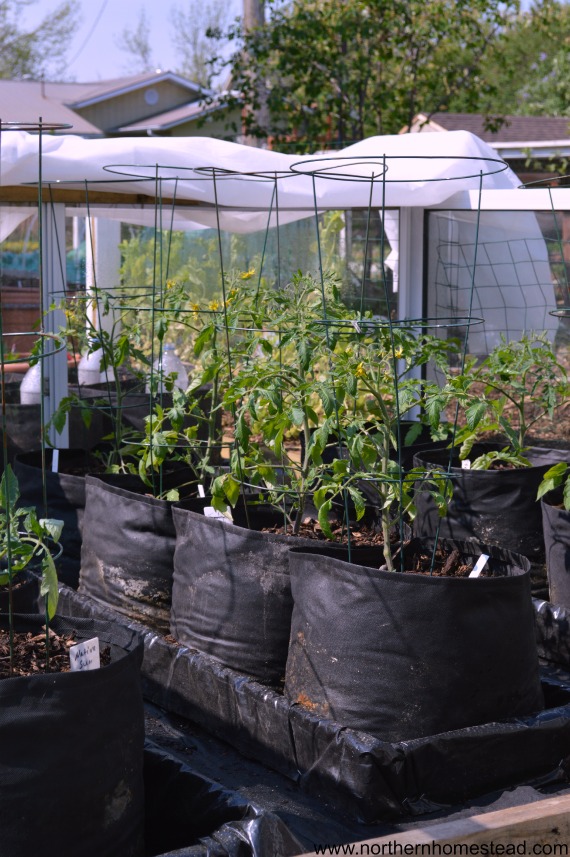
The durable fabric is an excellent material for making grow bags and container beds. Learn how to sew a grow bag here. We used it in the wicking bed and the raised window-protected garden.
Note: We only recommend using weed control fabric in raised beds that are not connected to the soil. If you build a raised bed in your garden, leave the bottom open so all the beneficial soil life can move up into your grow bed. Read more in Raised Beds vs Container Gardens.
We would like to hear the pros and cons of using landscape fabric in your garden. Please share in the comments below.
Don’t forget to subscribe to Northern Homestead and follow us on Facebook, Instagram, or Pinterest for the latest updates.

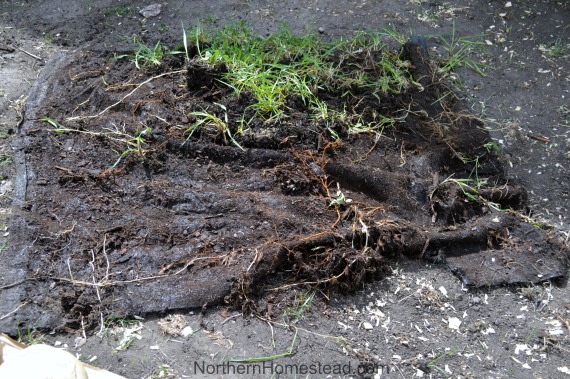
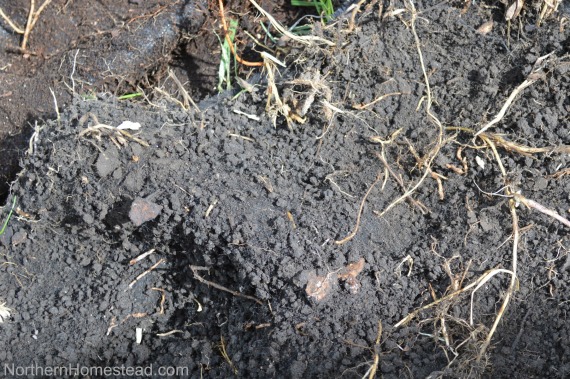
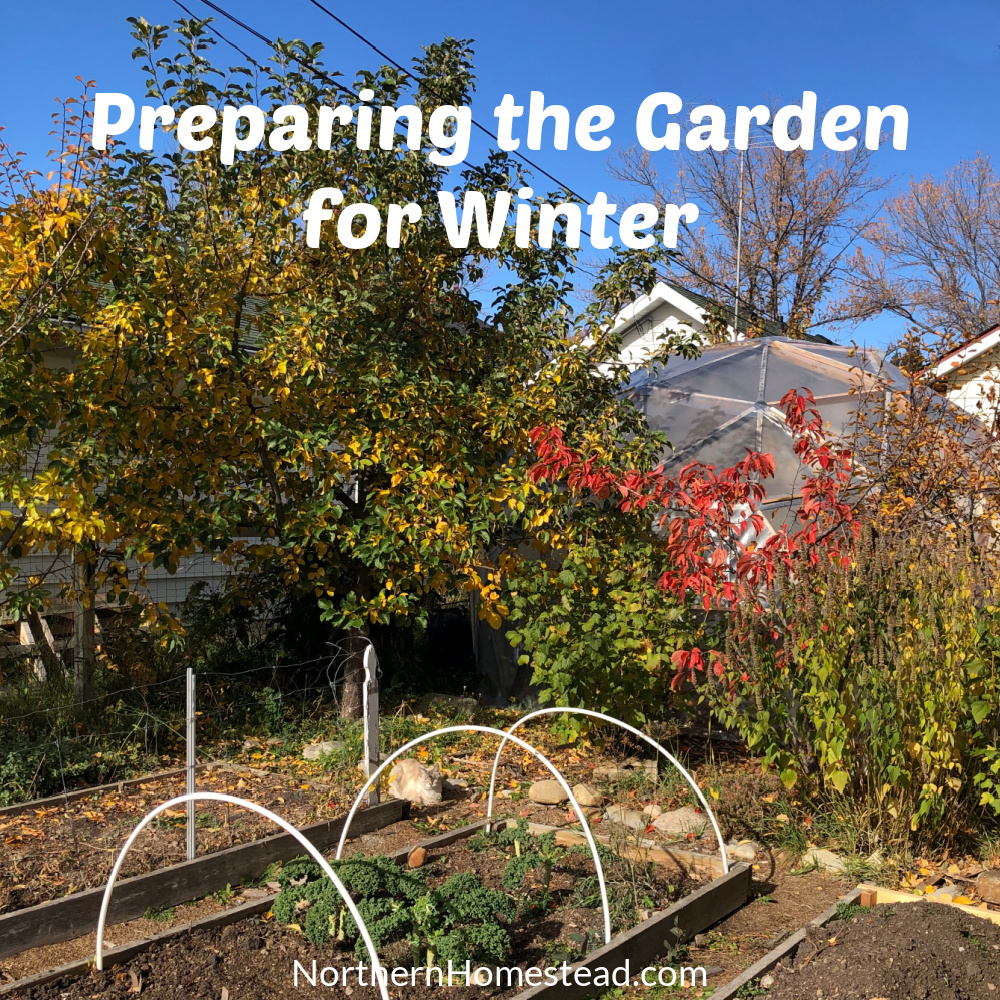


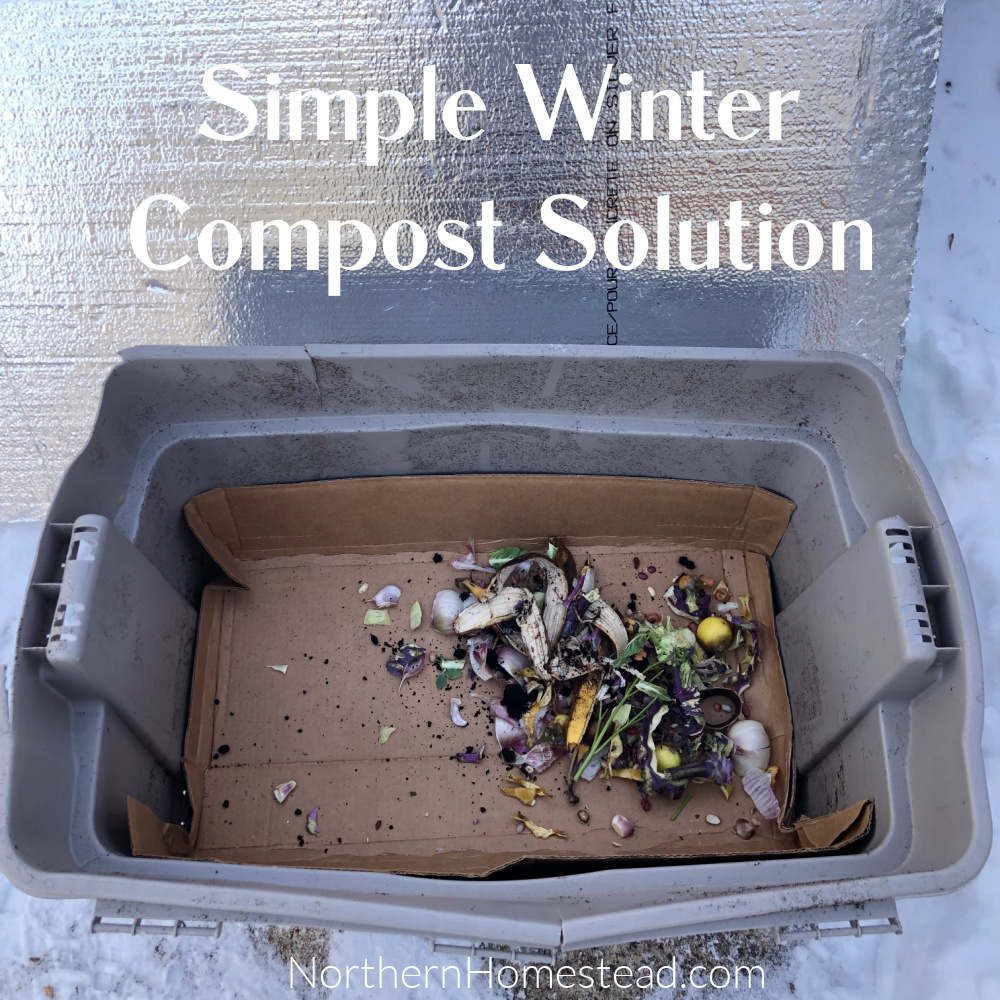
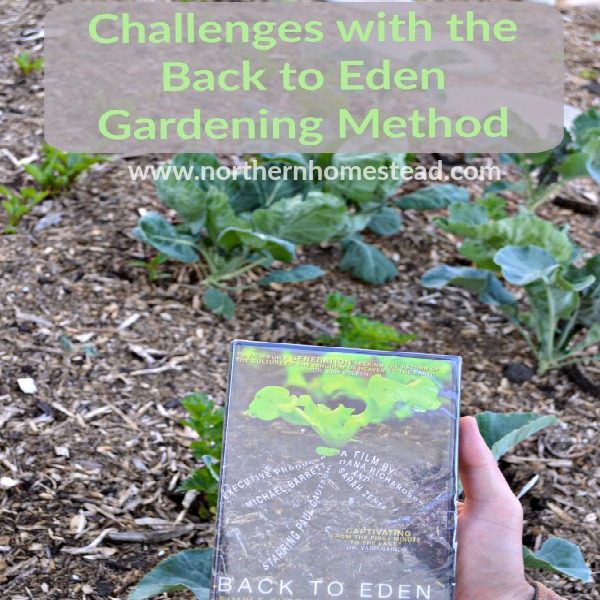
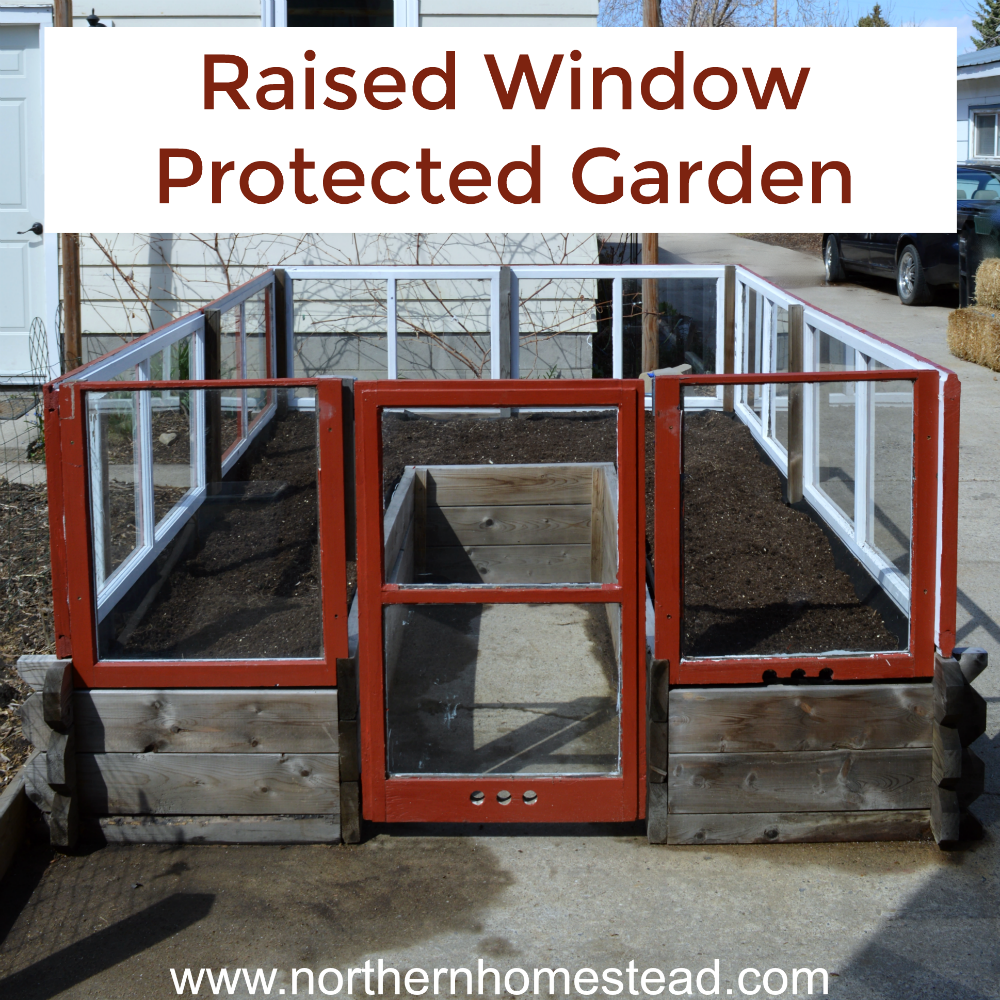
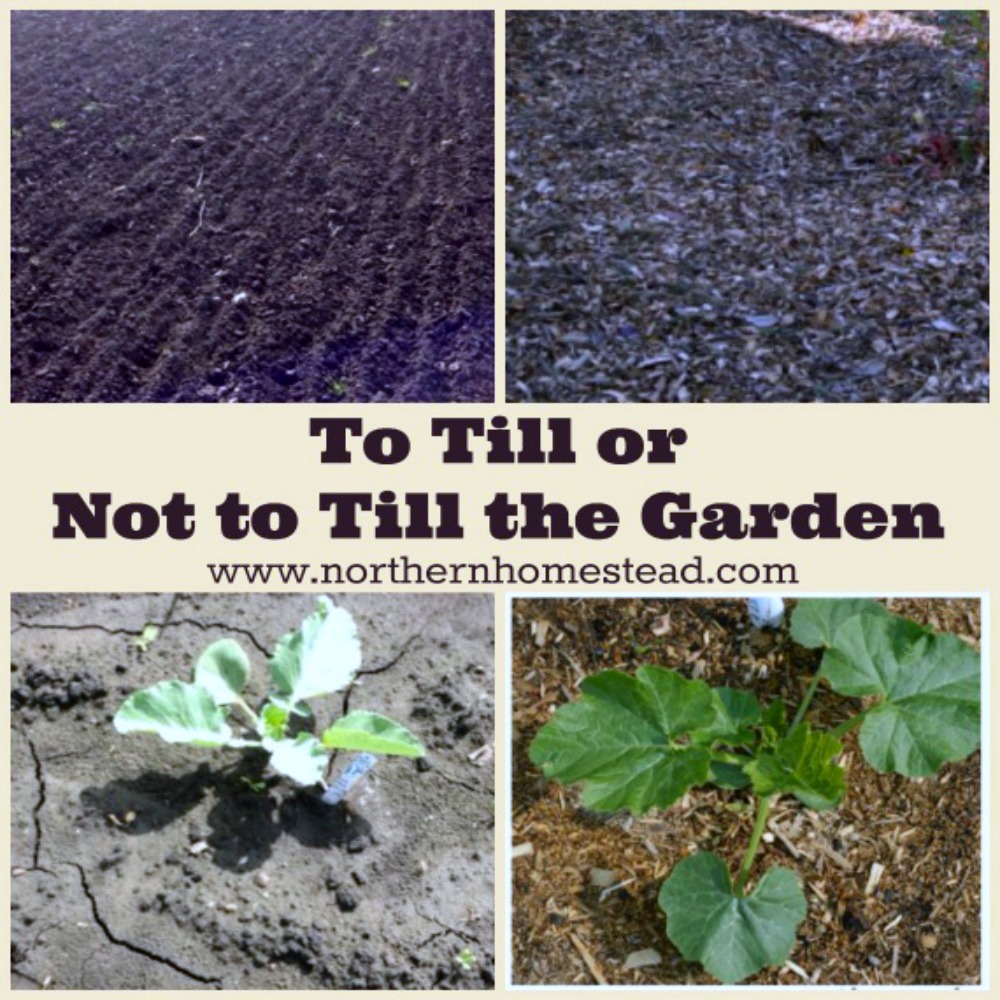

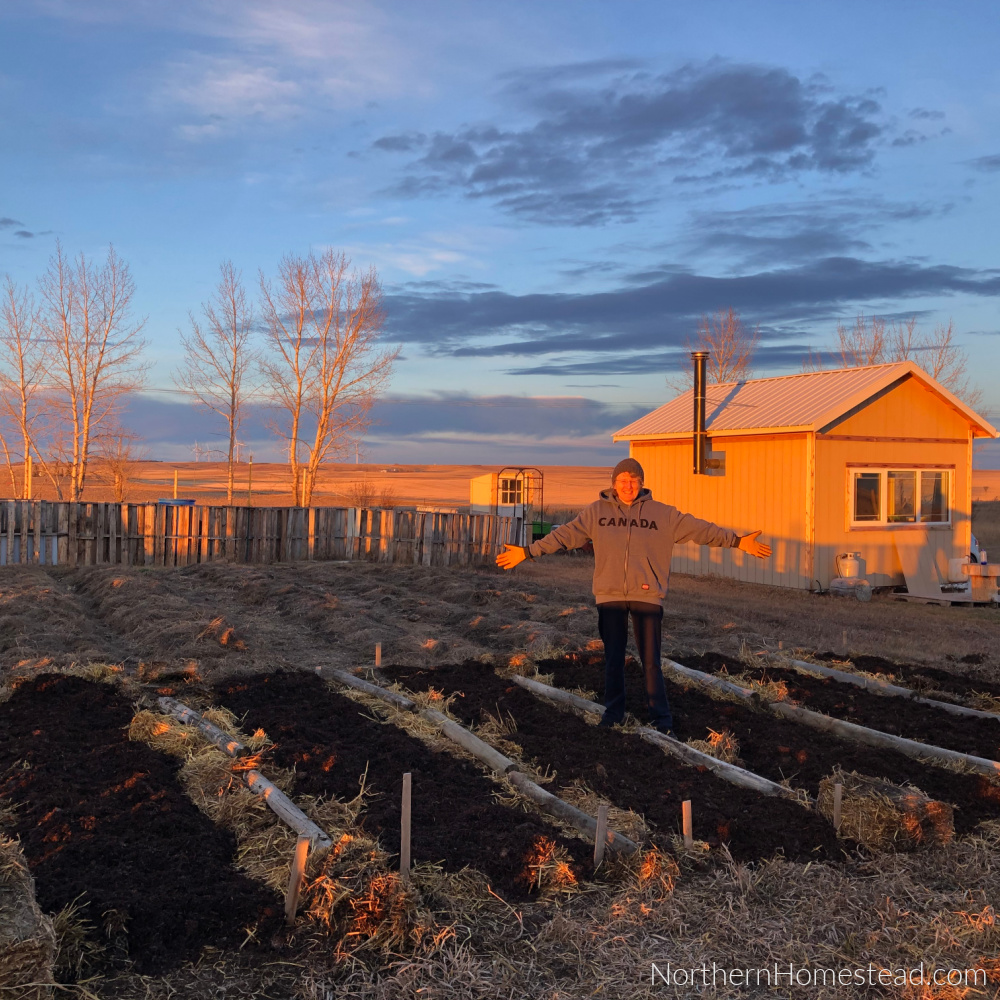

Wow, I would not even think of using this in my garden, but the previous homeowners used in in our front landscaped beds, and you’re right, it does NOT work! Plus it all comes up and flaps around if it’s not done properly or if there’s a lot of rain. Such a mess!
You are right, it is a mess, and hard to get rid of. We too have more weed fabric from previous owners, but to get rid of it we would have to do a lot of work, so even though I do not like it, for now we are leaving it.
I almost mentioned this subject when I did the mulch post, but didn’t have room. So glad you addressed it! I don’t like it, either. I usually use newspaper under my mulch. Great post!
Thank you Alli. Newspaper are great, and of course mulch.
I LOVE my weed control fabric. Mine is commercial grade and came on a huge roll…we use a forklift to move it. I have a very large cinderblock garden…we rolled the fabric out and then built the beds. I had almond wood mulch placed around the outside of the beds in the walk-ways…if any weeds do grow it takes a second to pull them up…EZ PZ. The worms migrate to the edges of the fabric, so that’s not a problem, either…the fabric is breathable so water and air are exchanged. My fabric is guaranteed for 20 years. I also use it as a shade cloth over the garden beds. Best stuff EVER.
It sounds like it is all new, down the road it might be more of a problem. I would be careful.
Ive been putting old rugs down as weed supressers, is this okay?
If the old rugs are made out of natural materials like cotton, wool, etc they will decompose. If it is synthetic, it’s about the same as plastic.
Great post! I had no idea weed control fabric created such problems. Thanks for the info!
~Lisa M
You are welcome. Honestly I was a bit shocked too, to see the mess it created over the years.
I agree I hate landscape fabric I am dealing with it right now in a commercial garden I have taken over, you can not move anything without cutting the fabric. The gardens are very over grown so I’m trying to divide plants , so I have tried to remove most of the fabric. I feel landscape fabric should be for pathways only, but newspaper is cheaper.
You are right, newspaper and cardboard is cheaper, and does not create problems over time.
I had no idea this was not a good idea. I just replaced my raise garden and added the weed cloth to it. I had used it before but thought I did not secure it well enough and the weed came up the sides but maybe they just came through the stuff. I just spent $50 buying new and replacing it in my raised beds. I am going to try cardboard and newspaper next time.
It takes a while till weeds come through, but if they do it is bad. Yes, cardboard or newspapers are a better choice, and cheaper too ;).
I’ve used this stuff before with poor results, so when 5 rolls of it was recently gifted to me I knew what to expect. I lay cardboard down and then the landscape fabric over that. This is working well. If I were going to buy more weed-barrier, I will invest in the Pro-5 Weed-Barrier available from Johnny’s Selected Seeds. This commercial grade cloth is heavy duty and I’ve worked with other farmers who are using it in their high-tunnels with success. The pro-5 is more expensive, but it lasts for years (my farming mentor had had hers for going on 7 years) with care and saves a lot of stress and hassle. Definitely worth the investment.
Thank you for sharing your experience, Samantha.
Weed cloth has its place. I wouldn’t place it down to block everything using anything on top of it.
Here is what I use it for. My raised bed garden beds that have been built with a floor in it. It holds the soil in the garden boxes, and allows air flow. Below this is the grass area that was so covered in weeds that i couldnt walk out there, and the soil was horrible when we moved here. I used professional weed cloth on top of the 6 layers of cardboard I put down to suppress the weeds. We framed out the garden area with wood, then built our raised beds with bottoms in them. We did this four years ago so I would have a garden area I could walk in without getting stickers in my socks. I have not mulched the area, I keep the weed barrier clean as much as I can, and I pull any weeds that do happen to come up from under it. I did not add any soil to the top of the cardboard. I was only using the cardboard and the weedcloth to suppress the weeds.
Here is the kicker. That soil underneath has been getting regular feedings of water when it rains, air can pass through, and the worms have gone to town on the cardboard. I suppose if anyone wanted to garden there now would probably have great success, with some additional soil amendments.
So, actually today (this morning), hubby and I just put down 8 layers of cardboard in the front of our house, on top of the weeds, then followed by 4 inches of soil. This is now covered in a double layer of weedcloth, and framed out with wood. The purpose is to hold the soil in place, while the worms do their job of feasting on carboard and soil. I expect to have a fantastic bed to start planting some nice hedges and flowers out there in a few months. This weed cloth will never have mulch on it. I will easily replace it, or remove it when I need to work the bed. So, weed cloth has its place, just not to be depended upon as a complete cure for weeds. A good quality professional weed cloth is the way to go. I’d sure like to know where the poster above got their 25 year warranted weed barrier. I want some of that.
Growers Supply online
What should I do for a more solid base than mulch if I’m placing 1/4 grade gravel? My space is 26′ x 15′ so that’s a lot of cardboard.
It does not sound that you are talking about a garden, at least I hope not. Gravel is not a good choice for a garden. If you ever change your mind to plant anything the gravel will be in the way, it will never turn into good soil.
I disagree that weed control fabric is bad – it simply is not that binary and depends on many factors. Where you have heavy clay soil (as I do) that is literally workable for about four weeks a year then weed control fabric is the only way to create anything that is remotely maintainable. When my soil is wet you could throw pots from it and when it’s dry you need a pneumatic breaker to work it! Once it becomes infested with weeds, a chemical killed is required otherwise it’s less work to sell up and move than to try and weed it. I get the point you’re making and if I had a friable free-draining loam I might agree but unfortunately I don’t. It’s a case of horses for courses.
It sounds like you need to build up your soil, not cover with fabric. Try to cover your soil with a few inches of compost every year, not till it in, just cover. Your soil will improve greatly. For the start you can use 6 inches easily and press it down, it will take care of the weeds. Plant into the compost. Hope this helps.
I used a commercial quality landscape fabric in my garden ten or eleven years ago. It was great for several years, but then my health went sideways for a few years and the weeds got going wherever there was a hole in the fabric (made by me to plant through), or where dirt accumulated on top of the fabric in the paths.
The key to using landscape fabric in a place where you either plant through it or walk on it, is maintenance. You simply have to pull it every few years, and reset it. If you do that, it lasts and is just as good as the day you put it down originally. I pulled my fabric this spring, tore out the buckthorn that had started coming in (it had been that long since I used the garden), and reset the fabric after amending the soil with fresh compost.
I do use a lot of cardboard in my garden now, and I don’t know that the organic aspect of it is helped any by the glues that hold the cardboard together. So I don’t fault the landscape fabric from that standpoint.
Would I use it again in a “working” garden? No. It’s not really made for that application, it’s made to keep weeds down with an attractive mulch around your foundations and not have traffic on it, or to put over gravel if you have a patio type area that you might have a container garden on. But with care you can make it work in garden. It’s not care free, though, by any means.
While I agree that the consumer grade weedblock fabric is useless and does everything you say, commercial grade fabric used as a weed block is the best thing in gardening in years. Don’t put mulch on top of it and make sure to put some grass clippings and leaves underneath it every fall to feed the soil life. It works great!
Anyone who would like to see fabrics in action should have a look at Curtis Stones urban farm in Kelowna on YouTube.
I use weed block fabric to make grow bags. That’s about all I use it for. As for lining my raised beds, I’ve always used cardboard. It breaks down over one or two seasons and will bring a ton of earthworms into your garden.
Wow. You killed all the trees, called the plants that came back up to maintain your soil “weird things” and then complained the “dirt” where you are isn’t “healthy and established”. Then you are “mostly” happy with your ability to further kill the plants and organisms that maintain your soil. How backwards can you get.
Thank you so much for this article! I come across mulch fabric in the creek bed where the city laid it in 2014, and it’s just one more piece of plastic-based garbage in their now. I’ve used it in the past, and never made that connection between how nice the weed suppression is in the short run, versus how bad it gets later on. I’ve switched entirely to using cardboard and mulch these days, but I have to go plant some very vulnerable trees and will be using fabric–for a short time. After the season is over, I’ll be heading back to take the fabric out, add more mulch, and see if the wee trees are good on their own from then on! If they’re still struggling to hold their own against the invasive grasses, I’ll just keep pulling up and re-moving the fabric for another year. It’s WORTH IT, to take that time to do it RIGHT from the start! These are going to be native food-trees, and the healthier the soil, the better the crop of nuts we’ll get to share with deer and birds and humans!
Any kind of fabric, whether degradable or not, damages the essential animals, soil, plants. etc. I’ve heard using sand layer is good for reducing weeds. Putting grass/lawn, sprinklers and using fabric are the dumbest things we’ve used. Sand, Shrubs, trees and drip system is the best.
Wow, I used this to create a bed at my old house and naively assumed it would disintegrate after awhile. I just built a bed at my current house in an area that used to be covered by pavers (no grass). I had planned to use the fabric but decided not to when I saw so many great worms. I’m glad I went with my instincts now!
I was very interested to hear about the problems caused by the weed control fabric. And the various suggestions to suppress weeds.
I used weed control in my garden 2 years ago, the weeds were so bad we couldn’t even pull them out anymore. It was easier to pull weeds out of the grass than weeds in my garden.
My husband is a horticulture student at Kansas State University. His soils course and landscaping course confirm your article statements are true.
Today I ripped out the weed fabric. I was able to shake off lots of the bark I still had back into the garden. The fabric was so heavy with all the weeds!
It felt good to get rid of the fabric. I found 2 small Prairie ring-necked snakes underneath the fabric and a lot of giant earthworms. I know removing the fabric will be good for them. Also, my soul can become healthier because now the bark can break down and work itself into the soil instead of sitting on top of the fabric.
Thank you for sharing the article you wrote and some pictures.
Thank you for sharing. It is helpful to hear personal experiences like this.
We just moved to a new house (in Alberta) – it has a tidy yard but with what I call “the bare look” – lots of grass and a few beds with crushed rock (landscape fabric underneath) and the occasional lonely perennial. It looks very neat but to me feels sterile. There were two sad-looking Hostas in the front bed and I realized why when I started exploring. The previous owner had laid down landscape fabric and cut two holes for the Hostas. They have now been there for years and like most perennials they increase by putting out new shoots around the edge. (Over time the center will eventually become dead and then you want to lift and divide the plant.) So these poor hostas tried to grow naturally but their new shoots come up and hit the landscape fabric!
I’ve never used landscape fabric although I’ve thought about it. In our other house I planted my flower beds full enough that there was no bare soil. After a few years they were mostly perennials so they were not much work and had very few weeds.
There are so many reasons not to use landscape fabric and perennials are one of them. Thank you for pointing it out. Taking out that fabric is a lot of work, but will be worth it in a long run.
Anna, do you think that commercial grade weed fabric would work as a frost blanket to lay over potted plants or in-ground plants in winter? I thought about using it in a greenhouse or high tunnel to keep the warmth in and save the plants from a frost. Of course the blanket would have to be removed to let some sun in during the day or after a few days once the weather warmed up, but if might save some delicate plants. What do some of the other readers think? Has anyone tried this? i have used thin cheap weed block under the bark/woodchips in my walkways around the yard. The problem is that when the bark breaks down you basically have shallow soil trapped on the weed cloth and weed and flower seeds can take root on it and look messy, but they are fairly easy to pull out if you get them when young. Otherwise the roots will find their way through the heap thin cloth and grow larger plants. The ideal use would be under stone/gravel pathways to keep the gravel from getting ground into the dirt and disappearing or becoming muddy over the years.
I have never tried weed fabric as frost protection. I mean during a light frost, anything that is on top of the plant will get the worst of it and protect the plant.
I am using landscape fabric under my deck and also around the outside of the deck as we get strong winds all year round , warm or cold winds it helps to make it more comfortable and the plants that I have in pots on the deck are a lot happier with it. So it is not just on the ground that you can use it.
I have come across it from where people have had lawns laid from rolls and the stuff is there for years and a right pain.
Unfortunately my front garden is full of small stones probably about 60% stone and 40% earth , so I am thinking of putting down layers of cardboard ( I am lucky that I have plenty of cardboard from a factory near me . I am then going to cover it with earth and then grass seed it. Do you think that is a good idea or get rid of the stone at great expense.
I live in the North of Scotland.
Yes, you can do that. Cardboard is always a better idea than fabric.
It seems there are a number of assumptions made here.
I would use weed control fabric to smother weeds with the intention of it being temporary, cutting holes to allow my desired plants through, then remove it at the end of the season. It would also not be intended for broad area use. It would not be buried (I don’t understand this idea; if there is soil or decomposed product on top, it cannot work as intended), and cleared regularly (such that decomposition would not accumulate soil on top, avoiding the previous problem).
Decomp is an issue that causes soil buildup, however we cannot make matter, so it is in a type of equilibrium; atmospheric carbon can be sequestered, but many processes remove soil (runoff, waterways, nutrient absorption, etc), whereby you do not always have accumulation of topsoil.
If used incorrectly, and not maintained, weed control fabrics (there are also biodegradable, untreated variations), like any of the other alternatives, will be ineffective and cumbersome.
We have used commercial week block for many many years, ours lasts about 10 years, use wood chips on top and add new ones every year. Use in raised bed garden area, our hoop house and in our tree lot between rows. if any weeds do try to start its way easy to push around with your boot or a simple hula hoe, something that wont damage the material. Its super heavy duty and well worth the money!!! I only use natural weed control sprays in other areas and have never had to spray in my garden. The weight of the fabric makes all the difference too. Go for the heaviest you can afford.
Excellent article Anna. It was cardboard, wood chips & mulch that made such a huge impact in the creation of my garden and the removing the aggressive weeds. I saved mountains of cardboard. I’ve shared this concept with struggling neighbors and a few have gotten on board with it. The thicker the materials the better for long lasting results.
Thank you Sheri for your kind words and sharing your experience.